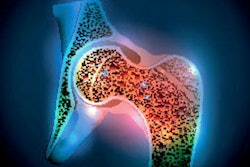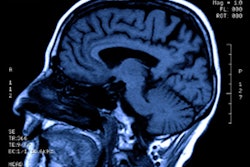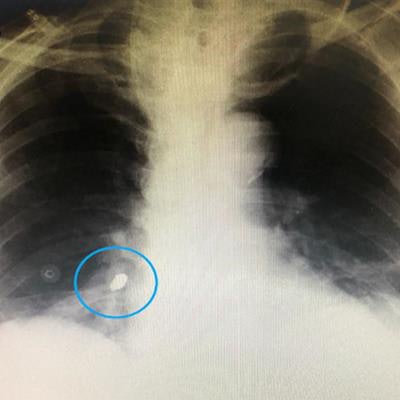
A chest x-ray helped identify a 9.5-mm dental crown discovered in the lung of an 81-year-old man admitted to the hospital for meningitis. The international team of authors behind the case published their report in the August issue of Radiology Case Reports.
Patients with respiratory alterations or who appear to have missing dental elements or loosening teeth following an accident or emergency should undergo imaging to prevent serious complications, the authors wrote. This is especially true for older patients, who often experience deterioration in oral hygiene and caries. Dentists should be mindful of the treatment options for these patients, they noted.
"Careful creation, placement, maintenance, and preservation of prosthetic crowns are critically important in elderly patients," wrote the group, led by Dr. Henrique Hadad from the oral and maxillofacial surgery department at the São Paulo State University School of Dentistry in Araçatuba, Brazil (Radiol Case Rep, August 2021, Vol. 16:8, pp. 2280-2285).
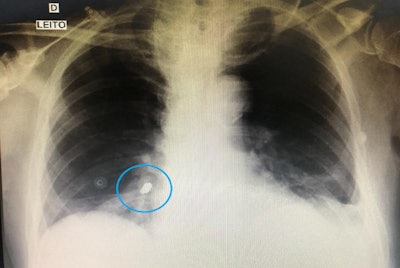 A chest x-ray revealed a foreign body, eventually identified as a dental crown, in a man's right lower lobe bronchus. All images courtesy of Hadad et al. Licensed under CC BY-NC-ND 4.0.
A chest x-ray revealed a foreign body, eventually identified as a dental crown, in a man's right lower lobe bronchus. All images courtesy of Hadad et al. Licensed under CC BY-NC-ND 4.0.Emergency situation
The case report focused on an 81-year-old man admitted to an intensive care unit for meningitis. The patient experienced altered consciousness and his oxygen saturation dropped, resulting in him needing emergency orotracheal intubation.
After the tube was placed, the patient underwent a chest x-ray to ensure the tube was in the proper location. However, imaging also revealed a foreign body shaped like a dental prosthetic crown in his right lower lobe bronchus.
Clinicians then assessed the patient's bronchus using an orotracheal intubation cannula along with a flexible bronchoscope and basket clamp. They chose this method because it has a lower risk of morbidity and mortality, the authors noted.
The scope passed freely through the patient's trachea without alteration of its caliber and without causing mucosal lesions. Using the scope, the team visualized the dental crown, which was obliterating the man's lower lobe bronchus in his right lung.
Clinicians used the basket clamp to grab the upper premolar dental prosthetic crown and then used the cannula to remove it. The procedure was completed without complications, and the patient was reintubated. Approximately one hour passed from the time the clinicians identified the tooth until its removal.
 Image of aspirated dental crown captured using a flexible bronchoscope and clamp.
Image of aspirated dental crown captured using a flexible bronchoscope and clamp.Managing a difficult case
Though crown aspiration is relatively uncommon, it constitutes a serious medical emergency, the authors wrote. Failure to remove the prosthetic in a timely fashion can result in death and severe complications, including aspiration pneumonia or obstructive pulmonary abscesses.
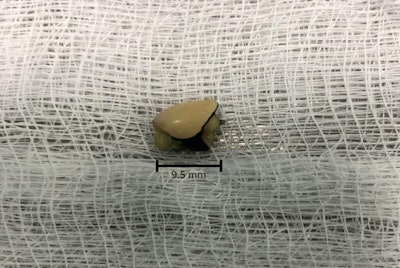 The removed 9.5-mm prosthetic dental crown.
The removed 9.5-mm prosthetic dental crown.Multiple factors are linked to loosening or fractured dental crowns, including caries, poor oral hygiene, cement types, periodontal disease, and poor prosthetic planning. Care should be taken when performing intubations or other such procedures on elderly patients, according to the authors.
Though following all recommendations while handling trauma or emergency patients is not always feasible, prevention is the best route to avoiding accidental ingestion or aspiration of dental prosthesis. Nevertheless, imaging is a vital component of diagnosing and treating patients who may have ingested or aspirated a foreign object, the authors added.
"Effective diagnosis is important to prevent further complications in patients who aspirate prosthetic dental crowns," Hadad and colleagues wrote.






